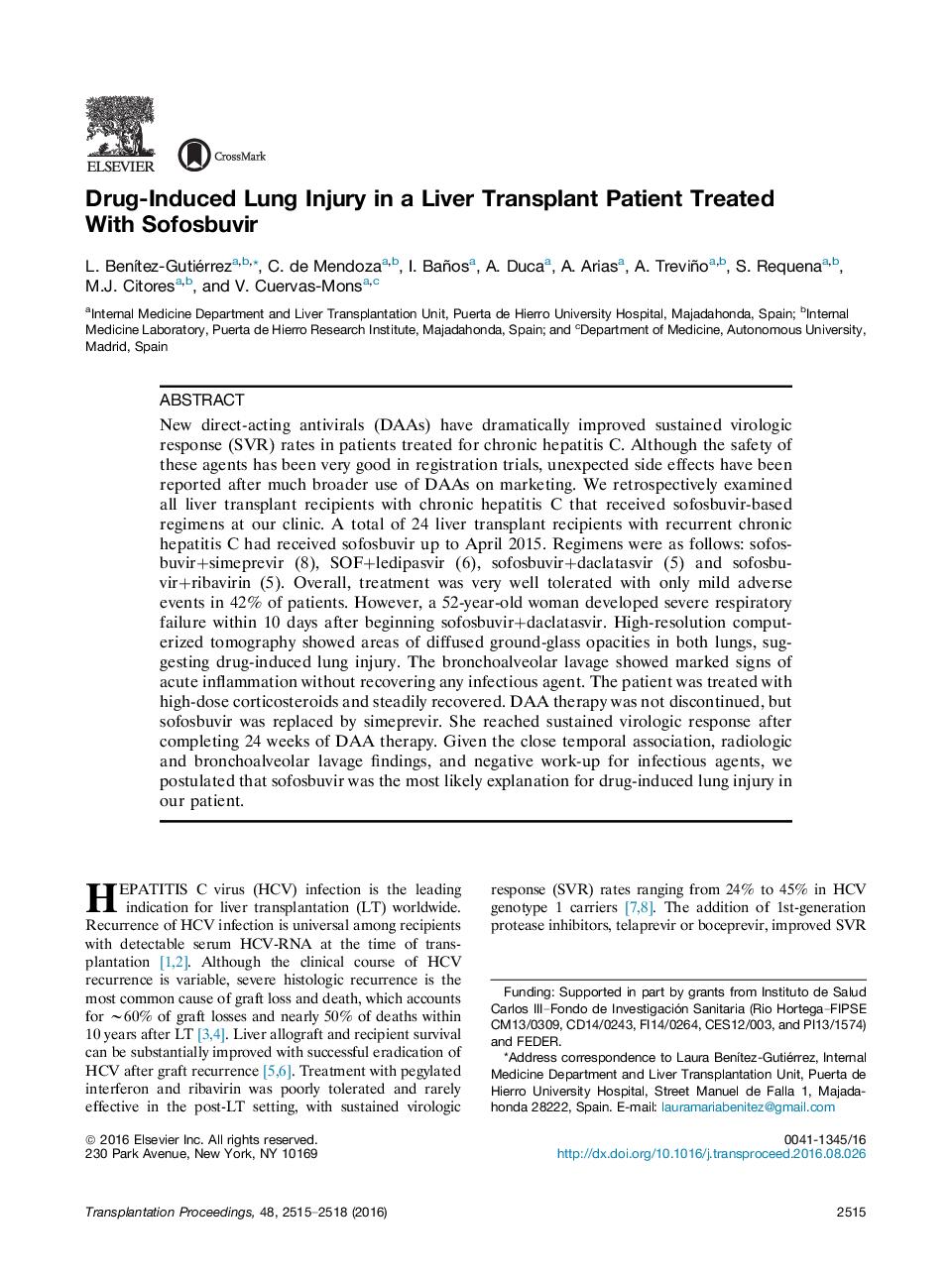| Article ID | Journal | Published Year | Pages | File Type |
|---|---|---|---|---|
| 5729407 | Transplantation Proceedings | 2016 | 4 Pages |
New direct-acting antivirals (DAAs) have dramatically improved sustained virologic response (SVR) rates in patients treated for chronic hepatitis C. Although the safety of these agents has been very good in registration trials, unexpected side effects have been reported after much broader use of DAAs on marketing. We retrospectively examined all liver transplant recipients with chronic hepatitis C that received sofosbuvir-based regimens at our clinic. A total of 24 liver transplant recipients with recurrent chronic hepatitis C had received sofosbuvir up to April 2015. Regimens were as follows: sofosbuvir+simeprevir (8), SOF+ledipasvir (6), sofosbuvir+daclatasvir (5) and sofosbuvir+ribavirin (5). Overall, treatment was very well tolerated with only mild adverse events in 42% of patients. However, a 52-year-old woman developed severe respiratory failure within 10 days after beginning sofosbuvir+daclatasvir. High-resolution computerized tomography showed areas of diffused ground-glass opacities in both lungs, suggesting drug-induced lung injury. The bronchoalveolar lavage showed marked signs of acute inflammation without recovering any infectious agent. The patient was treated with high-dose corticosteroids and steadily recovered. DAA therapy was not discontinued, but sofosbuvir was replaced by simeprevir. She reached sustained virologic response after completing 24 weeks of DAA therapy. Given the close temporal association, radiologic and bronchoalveolar lavage findings, and negative work-up for infectious agents, we postulated that sofosbuvir was the most likely explanation for drug-induced lung injury in our patient.
